List of amino acids – How to remember?
by egpat 22 Mar 2019
Amino acids play a vital role being involved in peptides, proteins and even with nucleic acids to bring many of the metabolic and cellular activities every day. Even though it is not an easy task, one should familiar with list of amino acids and their structures. Here we will go in a logical way to remember 20 essential amino acids based on their structures.
What is the general structure of amino acids?
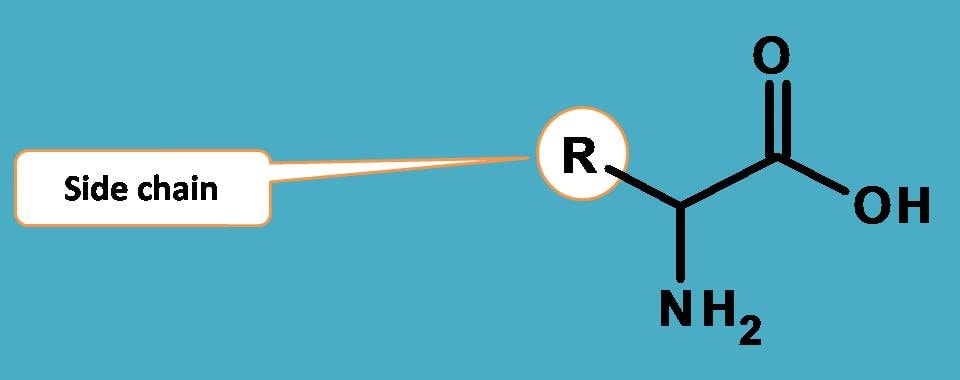
Amino acids are commonly having three parts such as carboxylic acid, amine group and carbon skeleton. You can find in the list of amino acids that first two groups are common for all while the carbon skeleton is variable among these amino acids bringing a variety of amino acids.
Whether they differ in nature of carbon skeleton?
Yes, of course, but not always.
Few of the amino acids have quite different carbon skeletons such as one having aliphatic while another having either aromatic or heterocyclic chains.

On the other hand, few of the amino acids even having aliphatic chain still differ in the nature of the carbon skeleton by presence of either acidic or basic groups.
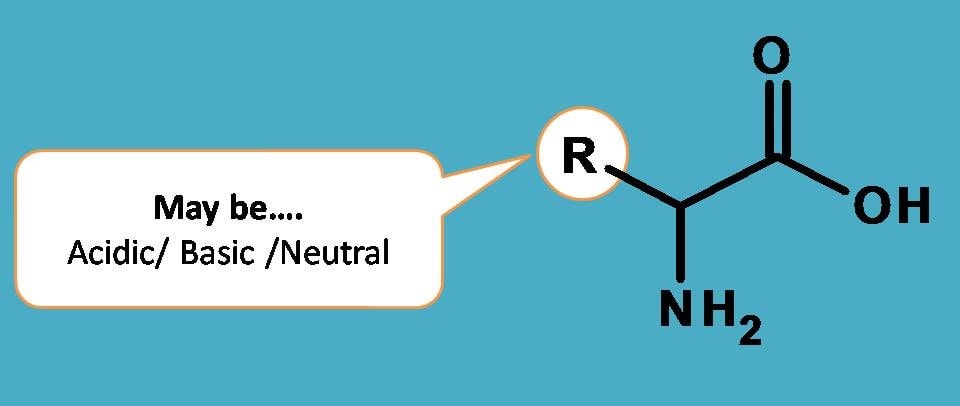
Finally, few amino acids only differ in chain length or attachment of side chains within the carbon skeleton.

For example, simple amino acids like alanine and leucine differ both in chain length and branching with side chains being methyl and isopropyl respectively.
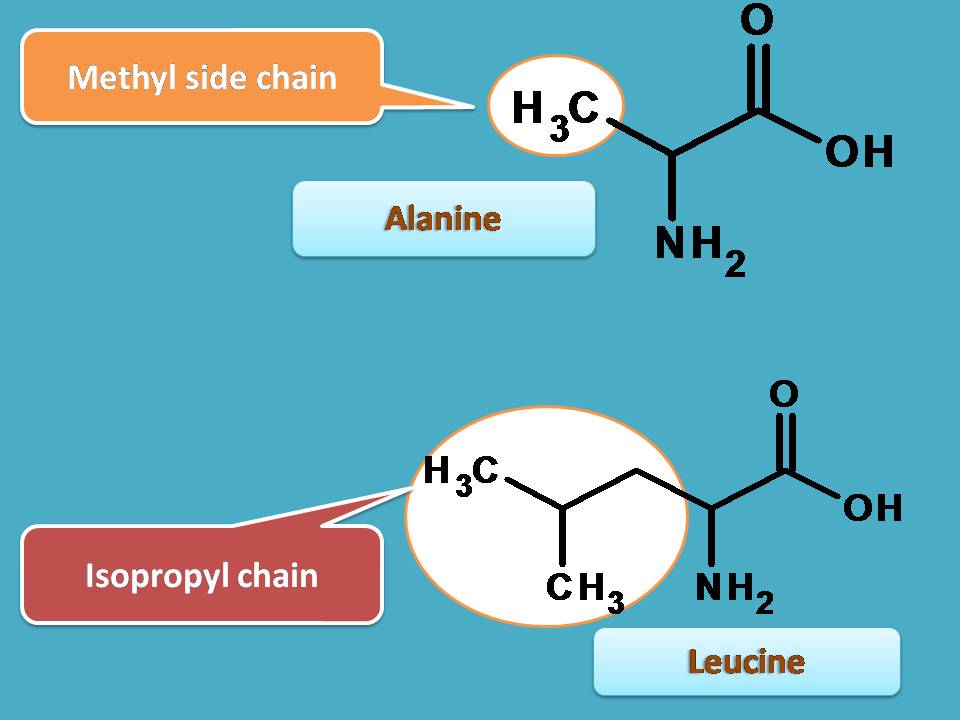
So it is better to group such type of amino acids only differing in chain length or position of side chains into one as they have similar physicochemical properties.
Similarly amino acids with different side chains or side chains with different groups will have different physicochemical properties hence can be listed into separate groups.
So, let’s classify amino acids based on the side chain and its nature.
List of amino acids based on side chain
From the above discussion now we can list amino acids mainly into three types based on the nature of side chain.
- Amino acid with aliphatic side chain
- Amino acids with aromatic side chain
- Amino acids with heterocyclic side chain
We will go with each group in detail and first of let’s go with list of amino acids with aliphatic side chain.
Amino acids with aliphatic side chain
This group can be further divide into other groups based on whether side chain is neutral, acidic or basic.
Alkyl side chain
This is the simplest group having amino acids with simple aliphatic chain.
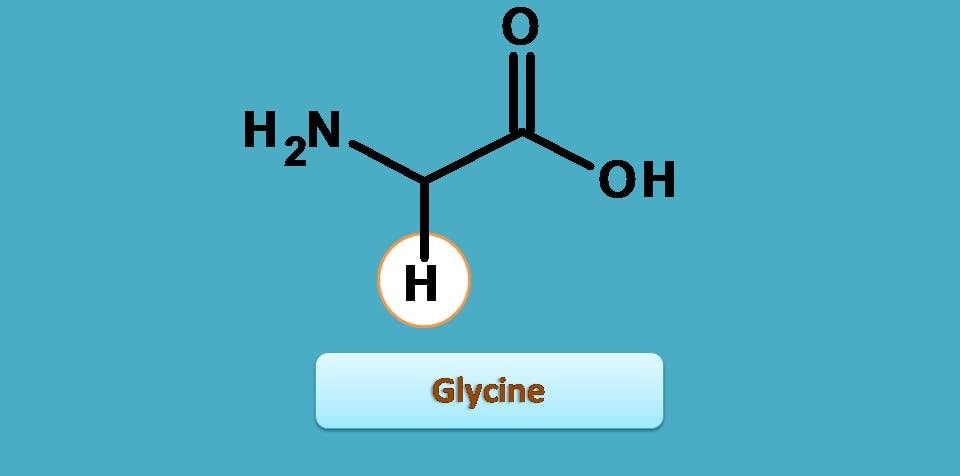
You can observe here that glycine has no extra carbon skeleton and simply it is a two carbon amino acid.
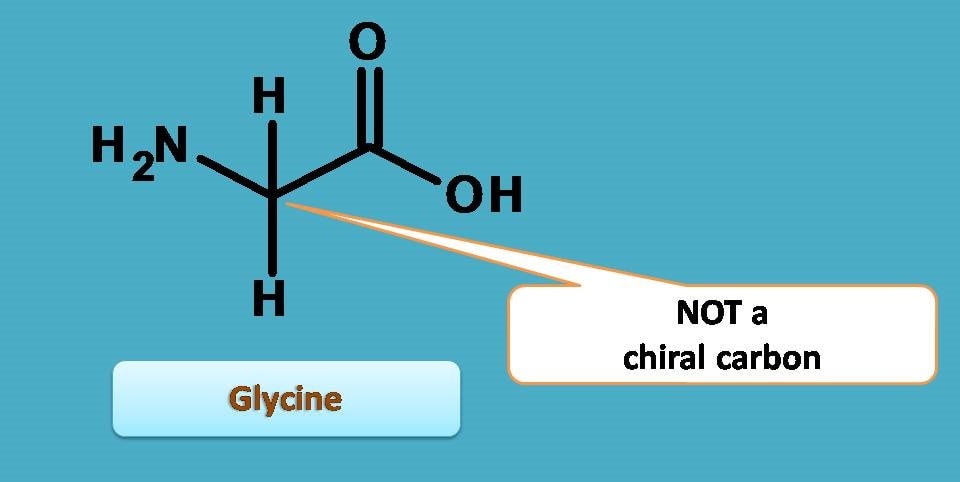
As it has no aliphatic side chain, chiral carbon is absent in glycine therefore it is achiral.
Here is the list of amino acids further in this group. You can observe that all these have alkyl side chain with variable length and branching.
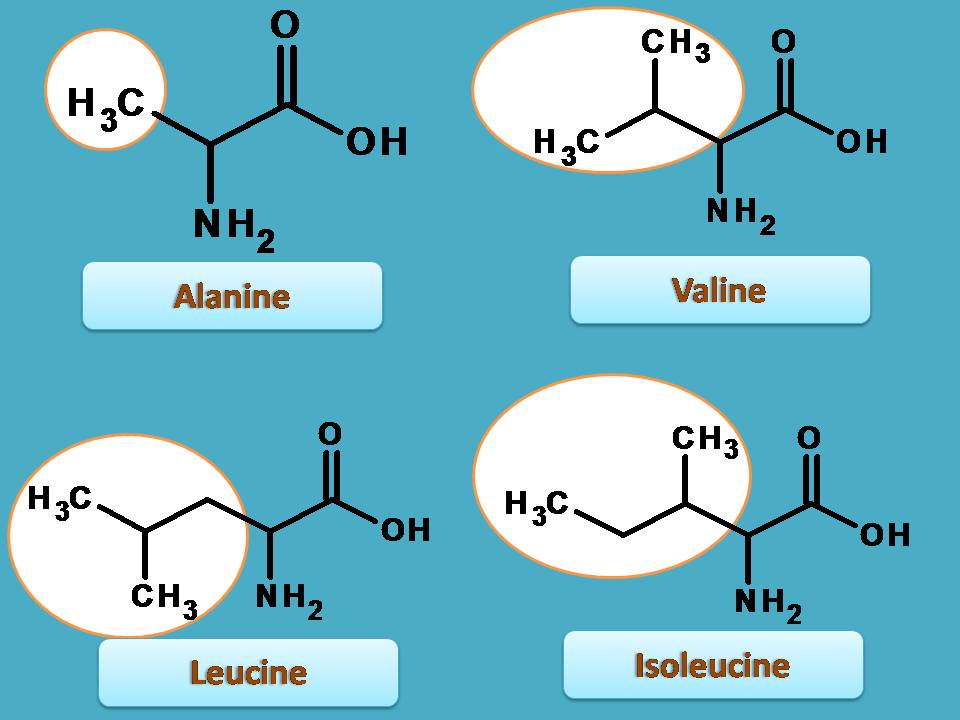
How to remember this?
You can remember them with simple code “GAVLI” which includes the first letter from the list of amino acids in this group.
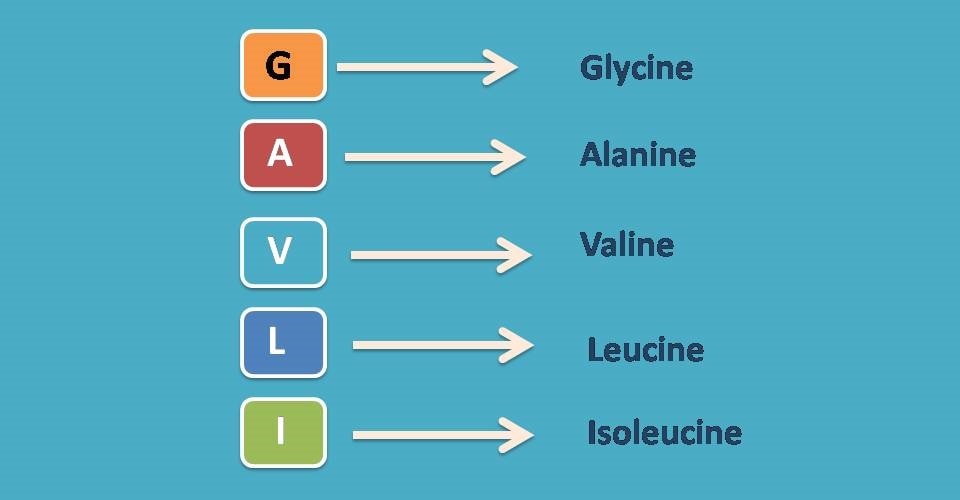
Acidic side chain
Can you guess who will bring the acidity to the side chain? Yes, undoubtedly it is carboxylic acid.
Here we have two amino acids in the list, namely aspartic acid and glutamic acid.
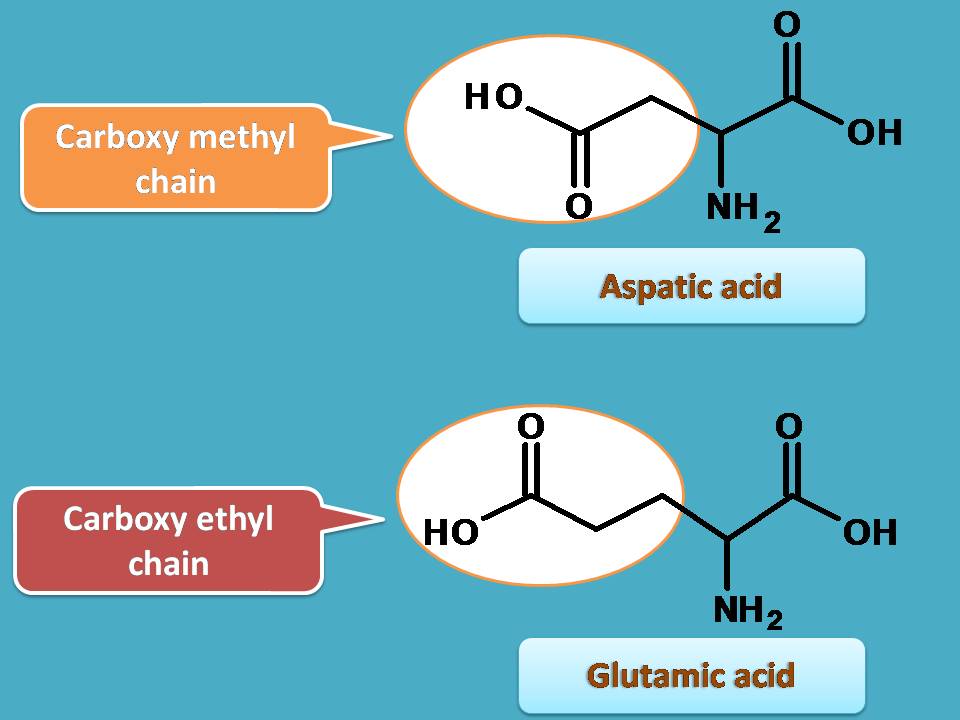
Aspartic acid has carboxy methyl side chain whereas glutamic acid has carboxy ethyl side chain.
Basic side chain
Now let’s turn to the other end, this time we want basic side chain. Who will provide it? One of the participants is amine. As amines are basic when the included in the side chain they will produce basicity.
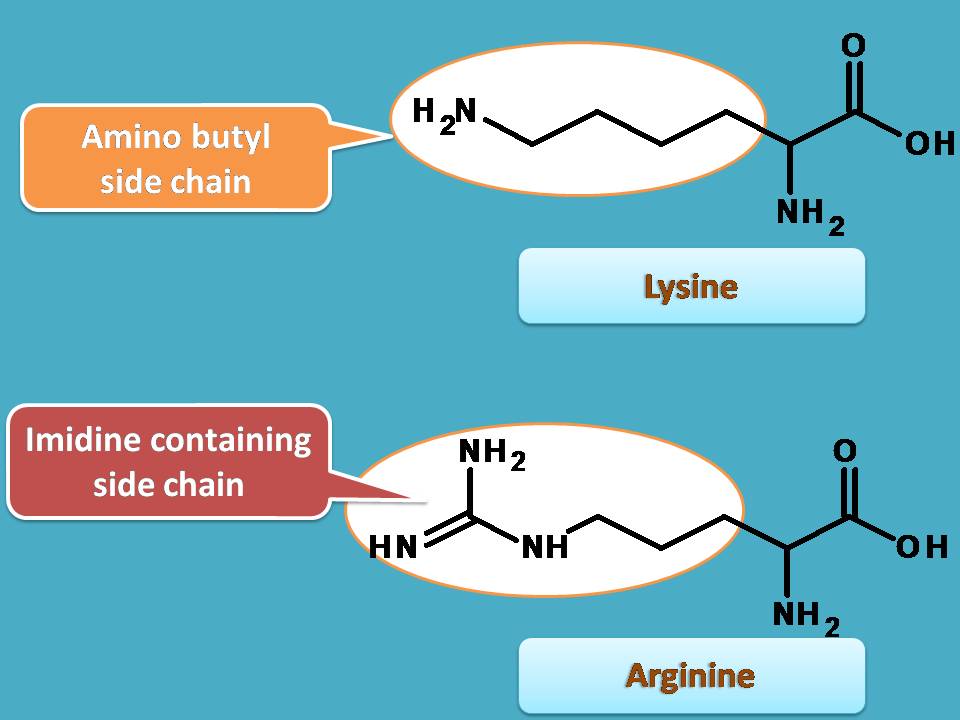
Another amino acid in the list is arginine. Here basicity is produced by imidine moiety in the side chain.
Neutral side chain
What next? Acidic and basic side chains are over. Now we may incorporate a neutral side chain into amino acid list.
Two of the amino acids in this group include aspargine and glutamine.
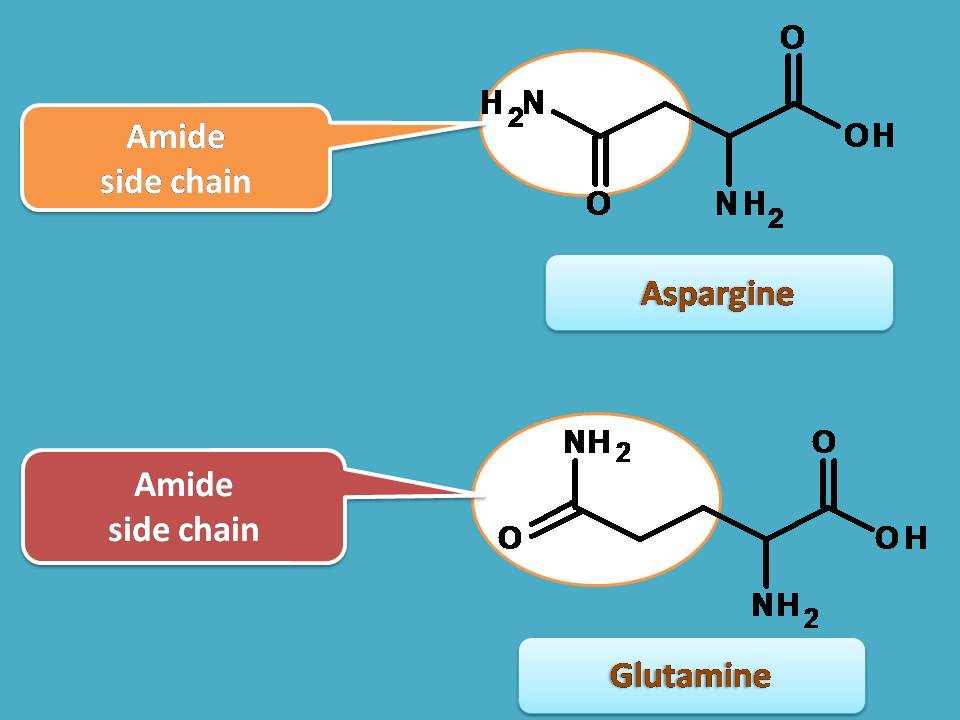
You can easily find that these two amino acids are the relatives of amino acids listed under acidic chain.
What’s the change in the side chain?
Simply, carboxylic acid is converted into amide later being neutral in nature.
You can also find the change in the suffix of amino acids. For instance, the suffix “-ate” is replaced by “-ine” in glutamine.
Hydroxyl containing side chain
Two amino acids contain hydroxyl group in the side chain namely serine and threonine. These two differ in the attachment of hydroxyl group in the side chain. Serine contains hydroxyl methyl group whereas threonine has 1-hydroxy ethyl group.
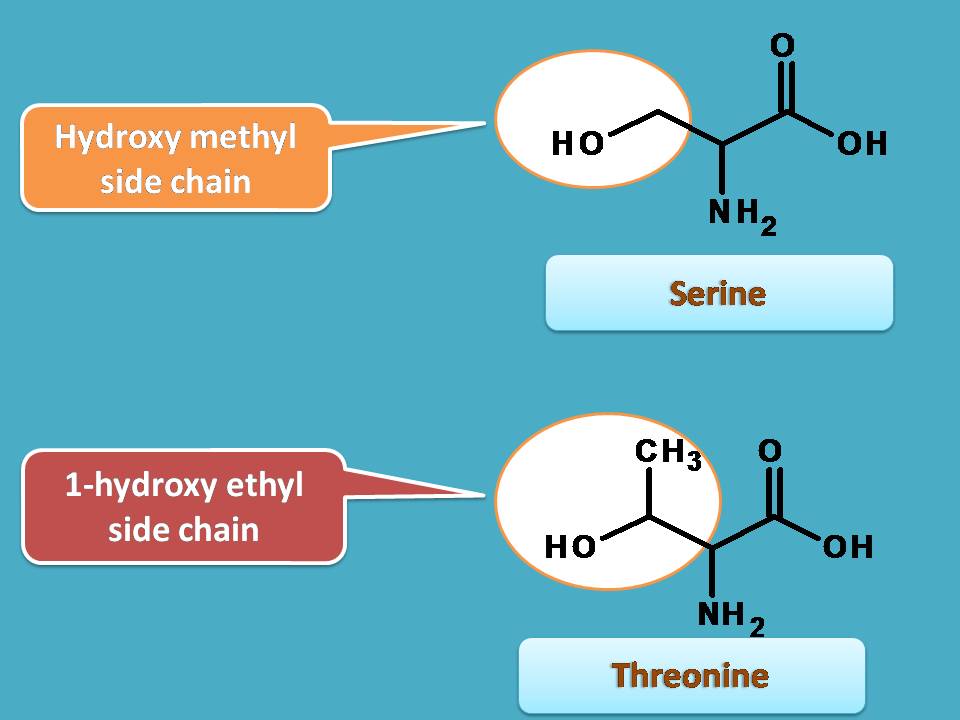
Thiol containing side chain
That’s fine, we have seen various list of amino acids with various side chains such as acidic, basic and neutral.
Is there anything else?
Why not? We have another list of amino acids with quite interesting thiol side chain which plays vital role in linking of amino acids with each other.
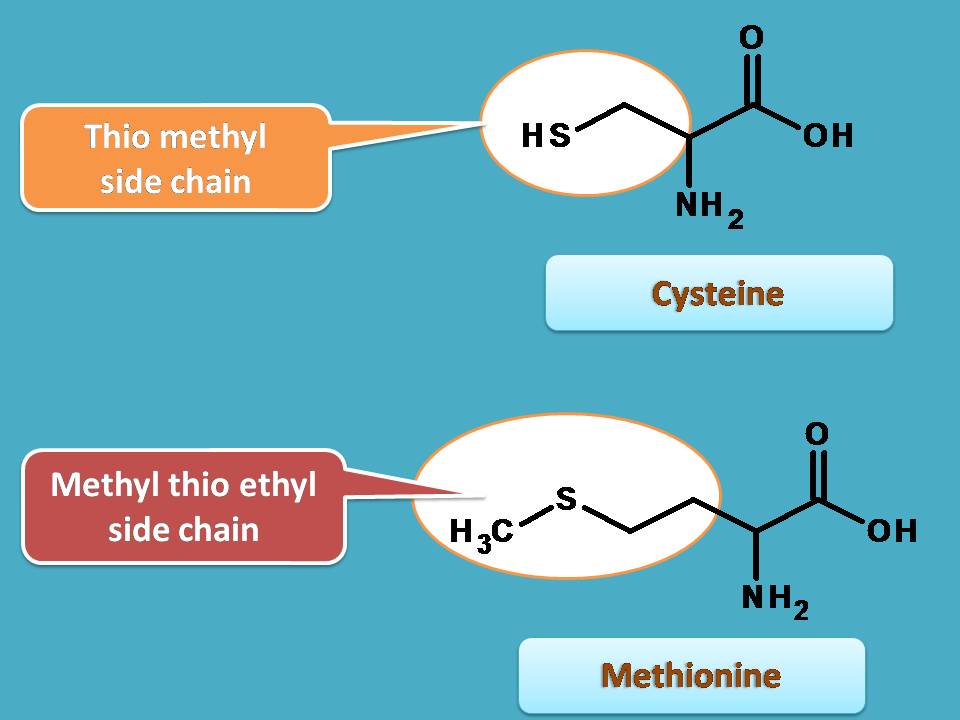
Cysteine contains simple thiol group while methionine contains methyl thio group.
Amino acids with aromatic side chain
Till now we have seen only aliphatic side chain. But aromatic rings also play vital role to rank two of the amino acids as very important from the list of amino acids.
Of these, one is tyrosine and another is phenyl alanine.
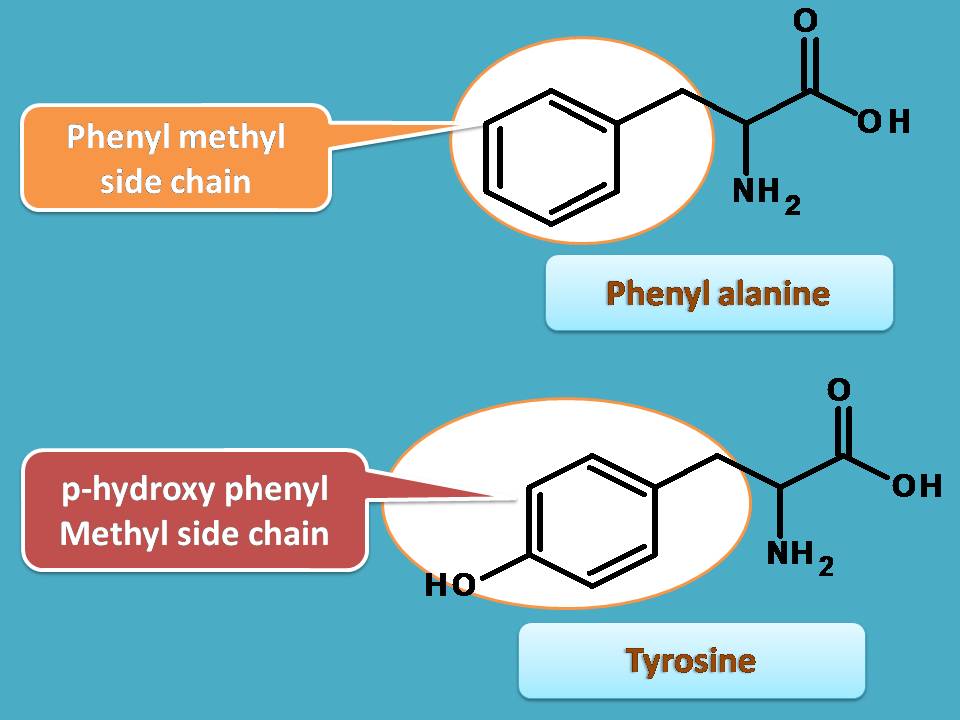
Tyrosine acts as precursor for biosynthesis of catechol amines while phenyl alanine plays vital role in supplying C6-C3 chains in biosynthetic pathways of plants.
Here you can simply remember these two amino acids as having alanine group attached to aromatic ring. For example, phenyl alanine and tyrosine have phenyl and p-hdrox phenyl rings attached to alanine respectively.
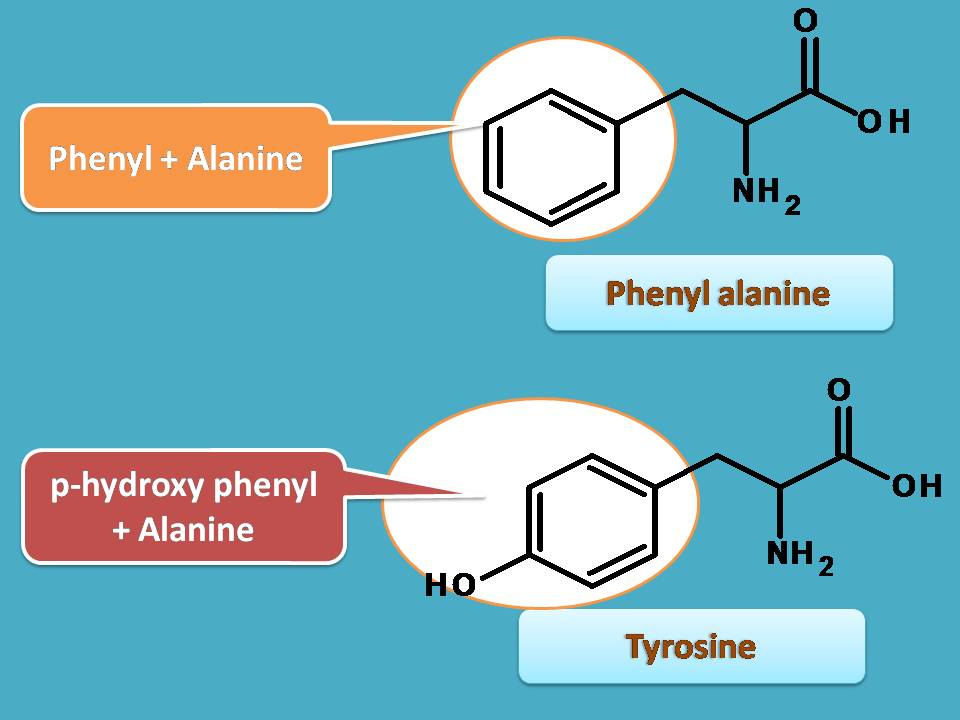
Amino acids with heterocyclic side chain
Finally we have hetero cyclic rings functioning as side chains. Two of them are tryptophan and histidine.
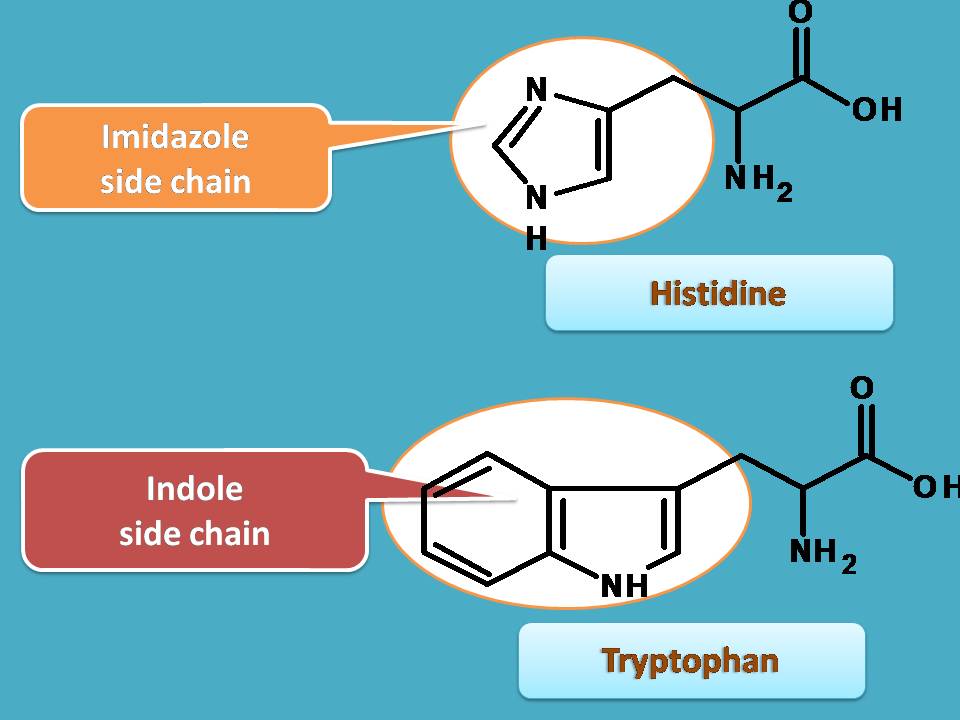
Another amino acid in the list is proline which has amine group included into the heterocyclic ring.

Even these amino acids are listed into heterocyclic still they show aromaticity hence can also be considered as amino acids containing aromatic side chain.
That’s about the list of amino acids which are essential for biological activities. They can be remembered very easily b listing into various groups based on the nature of side chain. Hope you enjoyed the reading. Please don’t forget to share this post to your friends.